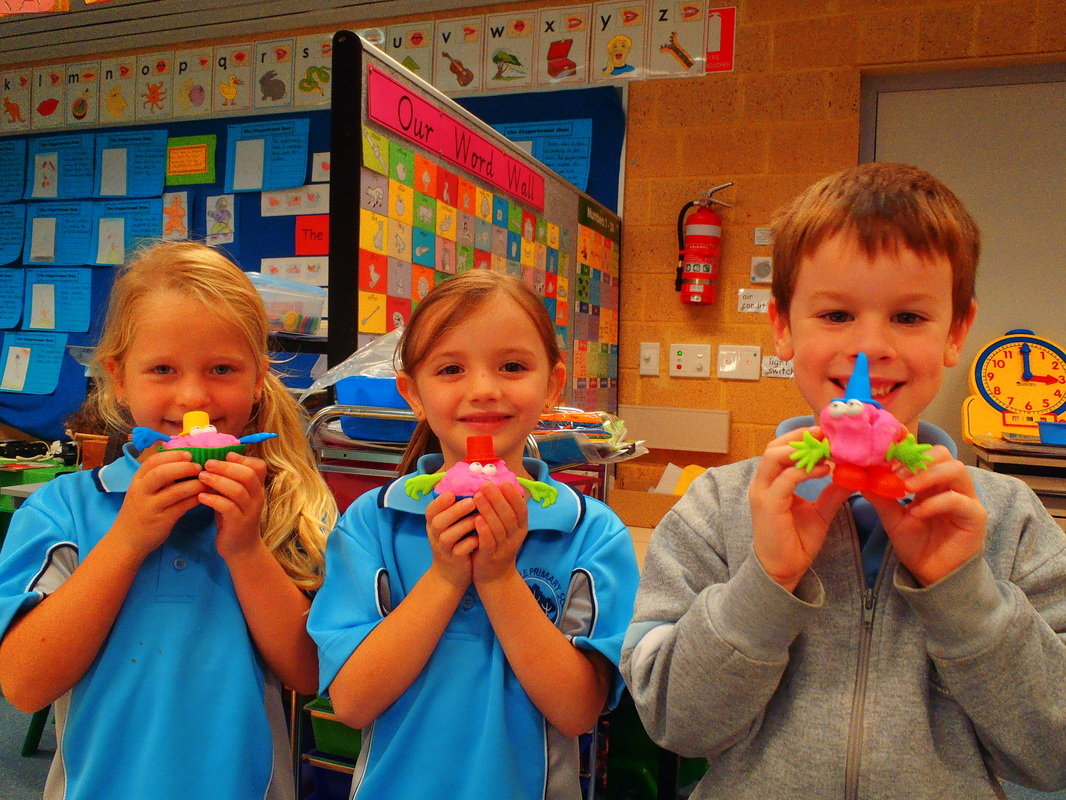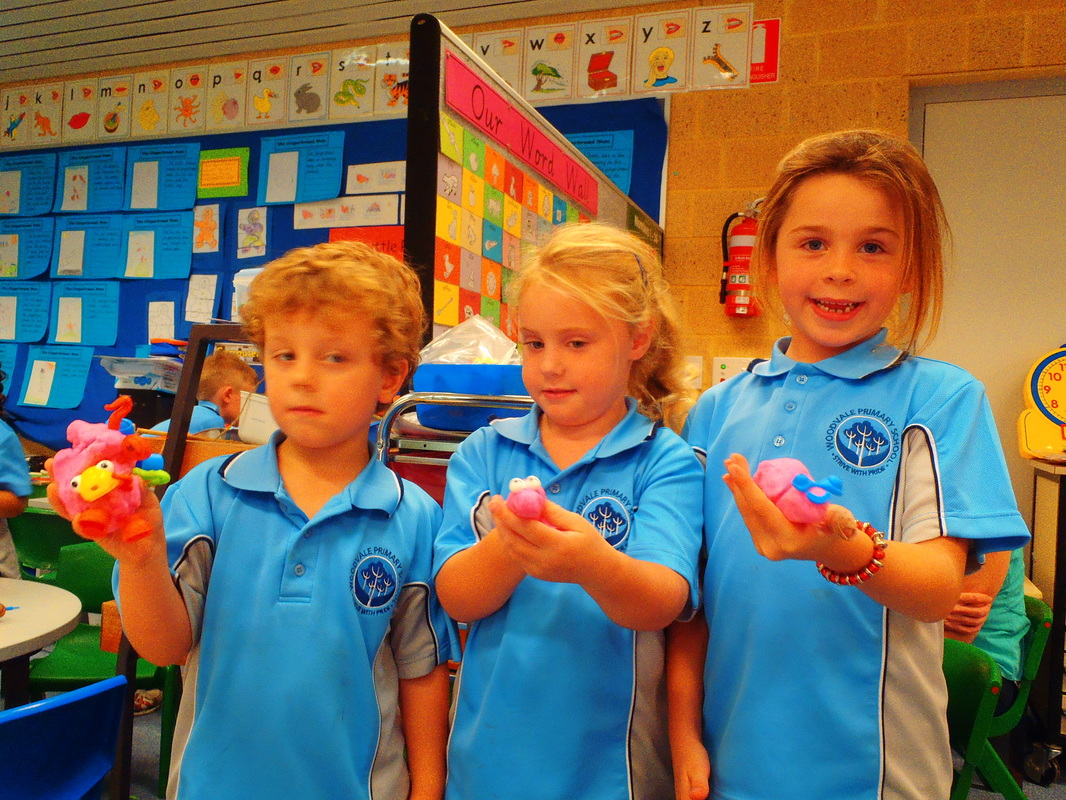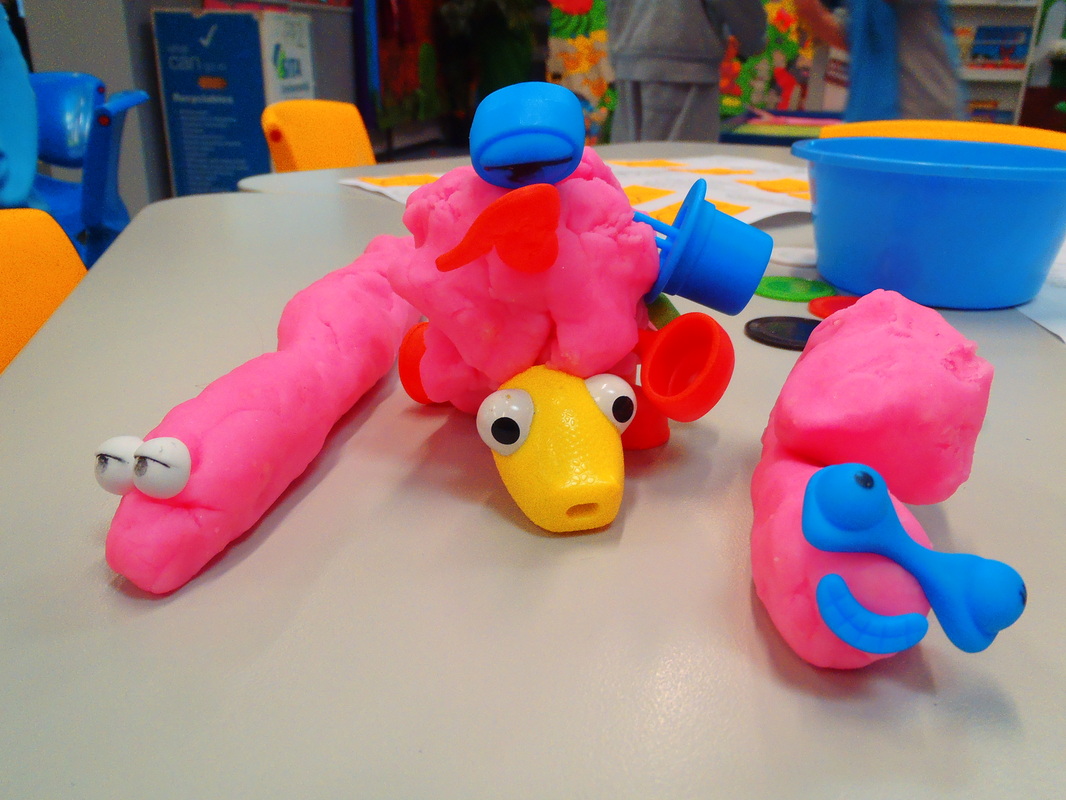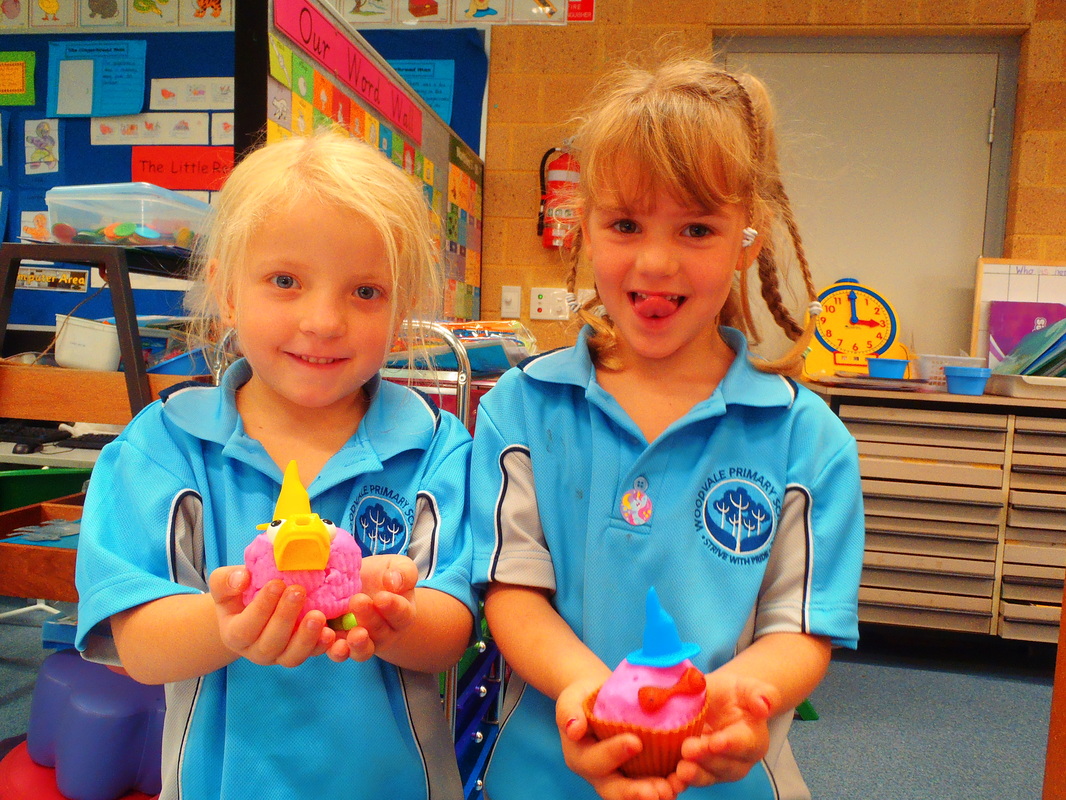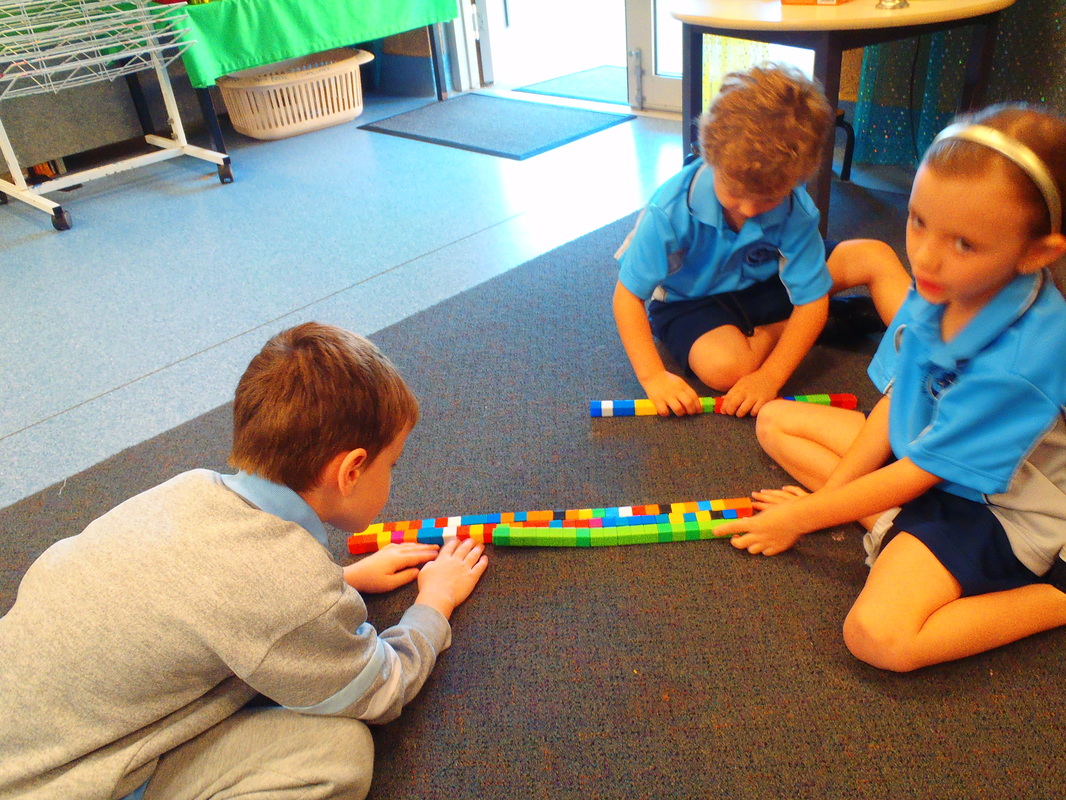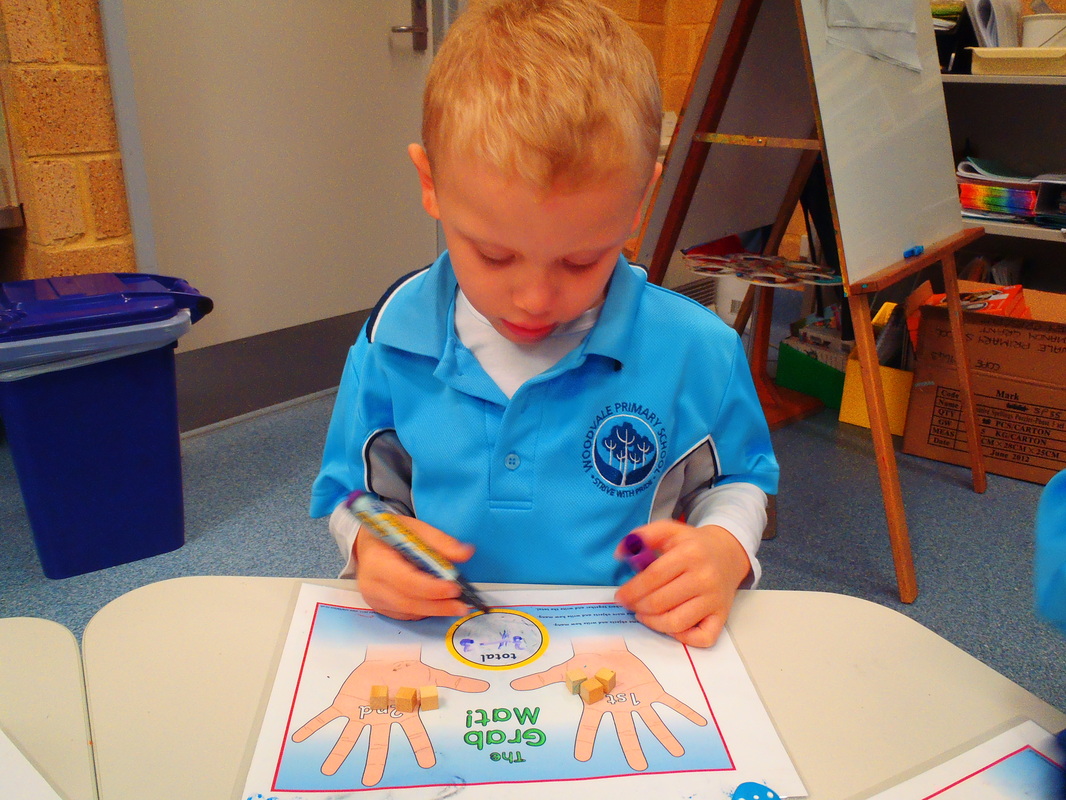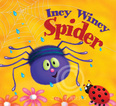
Last week we looked at the Nursery Rhyme Incy Wincy Spider. We made an Incy Wincy background using crayons and edicol dye. Our focus was on pencil grip and ensuring we coloured in the entire picture so when we used the edicol dye it only covered the areas we had not coloured. We then used left to right stokes of the edicol to assist us with reading and writing directionality. We then used small pieces of crepe paper which we scrunched up using our pincer grip to create Incy Wincy. We then labeled our picture. From the Nursery Rhyme we answered blank leveled questions and wrote a sentence about what our spider was doing.
We watched the "Magic School Bus Spins a Web" and learnt that spiders can make a web using spinnerets to catch their prey, some spiders build traps under the ground and some spiders hunt for their food. We then Wrote a spider fact and traced a web pattern to develop our fine motor skills.
We used the Braidy tool to assist us in creating a short narrative sequence about Incy Wincy Spider. Our focus was to connect our ideas, use full sentences and appropriate tense. You can assist your child at home by encouraging who, what, where, when, why and incorporate feelings into event retells and generating stories.
We have also been focusing on our listening and comprehension skills. When we listen we need to ensure we listen to the whole instruction, we clarify and misunderstandings and we complete each step asked of us. You can help your child at home by giving them simple 3 step instructions eg. Alex, can you go and get your school bag, shoes and hat please? To reinforce what you are asking ensure you have your child's attention. They are looking at you, get them to repeat the task if necessary, break instructions down into manageable steps. Use physical/visual prompts if required.
In our phonics programme we are focusing on recognising the visual letters and the sounds they make. We are then using this knowledge to decode simple consonant-vowel-consonant words. You can assist your child at home by revising the letters in the home tasks section of the BLOG, identifying letters within the environment, alphabet games, flash cards, identifying and decoding simple words in books etc.
As we continue to progress through our phonics programme a major focus is fine motor control in order to develop your child's pencil grip and letter formation. Activities such as tweezers, picking up small objects, pegs, spray bottles, playdough, painting, chalk, finger painting, threading etc will all assist in developing your child's fine motor control and strengthen the muscles in their hands. When your child is writing monitor how they hold their pencil, their posture, the pressure they apply to the page or surface, how tightly they are holding the object (pencil, paint brush etc) and the direction they form their letters. These aspects are much easier to correct at point of need rather than your child developing a habit which becomes much harder to correct.
We watched the "Magic School Bus Spins a Web" and learnt that spiders can make a web using spinnerets to catch their prey, some spiders build traps under the ground and some spiders hunt for their food. We then Wrote a spider fact and traced a web pattern to develop our fine motor skills.
We used the Braidy tool to assist us in creating a short narrative sequence about Incy Wincy Spider. Our focus was to connect our ideas, use full sentences and appropriate tense. You can assist your child at home by encouraging who, what, where, when, why and incorporate feelings into event retells and generating stories.
We have also been focusing on our listening and comprehension skills. When we listen we need to ensure we listen to the whole instruction, we clarify and misunderstandings and we complete each step asked of us. You can help your child at home by giving them simple 3 step instructions eg. Alex, can you go and get your school bag, shoes and hat please? To reinforce what you are asking ensure you have your child's attention. They are looking at you, get them to repeat the task if necessary, break instructions down into manageable steps. Use physical/visual prompts if required.
In our phonics programme we are focusing on recognising the visual letters and the sounds they make. We are then using this knowledge to decode simple consonant-vowel-consonant words. You can assist your child at home by revising the letters in the home tasks section of the BLOG, identifying letters within the environment, alphabet games, flash cards, identifying and decoding simple words in books etc.
As we continue to progress through our phonics programme a major focus is fine motor control in order to develop your child's pencil grip and letter formation. Activities such as tweezers, picking up small objects, pegs, spray bottles, playdough, painting, chalk, finger painting, threading etc will all assist in developing your child's fine motor control and strengthen the muscles in their hands. When your child is writing monitor how they hold their pencil, their posture, the pressure they apply to the page or surface, how tightly they are holding the object (pencil, paint brush etc) and the direction they form their letters. These aspects are much easier to correct at point of need rather than your child developing a habit which becomes much harder to correct.
We used playdough to create characters. We had to give them a name and a setting in which they lived. These are some of our characters:
| Harry: My character is called Scoopy and he lives with his friend. Sophie: My character is called Sparkles and she lives in Woodvale. Jack: My character is called Jayden and he lives in a witches house. Sebastian: My character is called Sebastian and he lives on the moon. | Olivia: My character is called Whitey and he lives at home. Erin: My character is called Maggie and she lives in the garden. Sienna: My character is called Isabella and she lives in a cave. Holly: My character is called Petty and hse lives in a jungle. Leah:My character is called Leah and she lives in the jungle. |
In Numeracy we are looking at teen numbers. We revised the 1-9 number sequence and used this knowledge to assist us when ordering teen numbers. We then made a web using wool and followed the 11-20 number sequence. We are continuing to look at addition and have introduced the concept of subtraction or take away. Using counters we practiced Number stories from Incy Wincy Spider. At home you can assist your child by using language involving more/less, take away, addition, how many altogether, how many are left, and providing situations in which they can use simple addition and subtraction. Eg. Counting how many knives and forks they need, count the pegs when bringing in the washing, count how many tomatoes are left in the bag after we have used some to make sandwiches etc.
At home you can revise numbers 11-20 with your child and encourage your child to identify numbers within their environment. Eg. House numbers, shops, signs etc.
At home you can revise numbers 11-20 with your child and encourage your child to identify numbers within their environment. Eg. House numbers, shops, signs etc.
